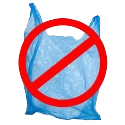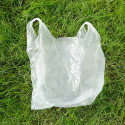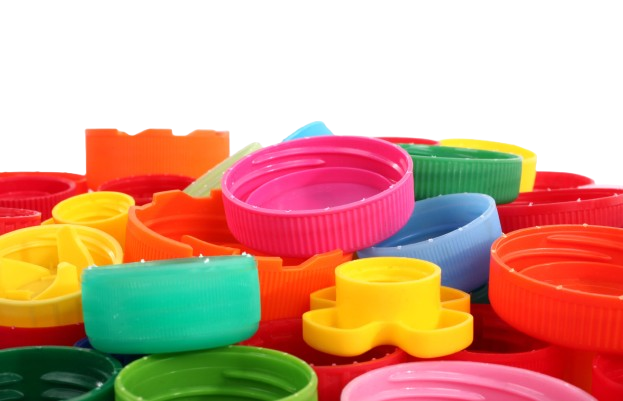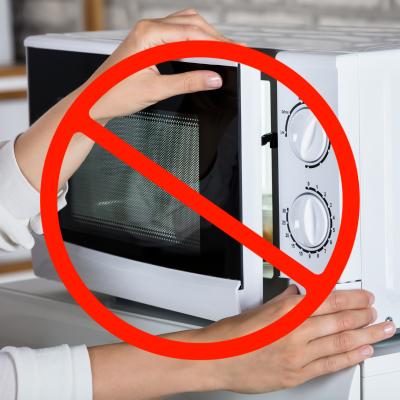Plastic Resin Codes Guide
Resin Identification Codes (RICs) classify plastic types based on their chemical composition. These numbers (1–7) are found on most plastic items and are essential for proper sorting and recycling.
In Maryland, recycling rules vary by county, but most jurisdictions accept plastics #1 and #2 in curbside programs. Understanding each code helps reduce contamination in the recycling stream and supports a more circular, sustainable economy.
Here's what you should know:
Plastic #1 – PET (Polyethylene Terephthalate)
Rigid PlasticPET is commonly used for soft drink and water bottles, salad dressing containers, and peanut butter jars. It is accepted in most curbside recycling programs.

More info about Plastic #1 – PET (Polyethylene Terephthalate)
Additional Notes
Avoid Reusing for Food Storage
PET containers are intended for single use and may leach harmful chemicals if reused.
Plastic #2 – HDPE (High-Density Polyethylene)
Rigid PlasticHDPE is commonly used in milk jugs, detergent bottles, and juice containers. It’s accepted in most curbside recycling programs.

More info about Plastic #2 – HDPE (High-Density Polyethylene)
Additional Notes

Plastic Bag
No Plastic Bags in Curbside Recycling. Many plastic bags are labeled plastic #2 or #4, but they are too thin to recycle with hard plastics and will get caught in recycling machinery.

Help Prevent Litter
Plastic #2 is lightweight and easily pollutes the environment where it leaches chemicals. Dispose of it properly.
Empty Motor Oil Containers
Even if marked HDPE #2 plastic, empty motor oil containers are hazardous waste. Dispose of them properly.
Plastic #3 – PVC (Polyvinyl Chloride)
Rigid PlasticPVC is used in pipes, vinyl flooring, and shower curtains. It contains harmful chemicals and is not recyclable in curbside bins.

More info about Plastic #3 – PVC (Polyvinyl Chloride)
Additional Notes
Avoid Burning PVC
Burning PVC releases toxic dioxins harmful to health and the environment.
Plastic #4 – LDPE (Low-Density Polyethylene)
Flexible PlasticLDPE is used for plastic bags, bread bags, and squeezable bottles. While some items are recyclable, plastic bags are not accepted in curbside bins.

More info about Plastic #4 – LDPE (Low-Density Polyethylene)
Additional Notes
No Plastic Bags in Curbside Recycling
Many plastic bags are labeled plastic #2 or #4, but they are too thin to recycle with hard plastics and will get caught in recycling machinery.
Help Prevent Litter
Plastic #4 is a lightweight material that easily finds its way into the environment, where it can leach toxic chemicals. Dispose of it properly to prevent it from becoming litter.
Plastic #5 – PP (Polypropylene)
Rigid PlasticPolypropylene is used for yogurt containers, straws, and bottle caps. It is recyclable in curbside bins.

More info about Plastic #5 – PP (Polypropylene)
Additional Notes

Keep Caps On
When recycling plastic containers with caps, leave the caps on. Recycling equipment can now handle the whole bottle at once.

Avoid Heating Plastic
Keep plastics containing food or drink out of the microwave, dishwasher, and other hot places. Heat can cause plastics to break down and release chemicals.
Plastic #6 – PS (Polystyrene)
Rigid PlasticPolystyrene is used for disposable cups, CD cases, and plastic utensils. It is not recyclable in curbside bins.

More info about Plastic #6 – PS (Polystyrene)
Additional Notes
Health Concerns
Styrene, a component of polystyrene, has been found in human fat tissue and is suspected to be carcinogenic.
Plastic #7 – Other (Multilayer/Bioplastics)
Various PlasticsPlastic #7 includes multilayer materials, bioplastics, and other types not classified under #1–#6. Recycling varies; often not accepted in curbside bins.

More info about Plastic #7 – Other (Multilayer/Bioplastics)
Additional Notes
Biodegradable Plastic Is Not Recyclable
Vegetable-based plastics such as PLA are often labeled as plastic #7, but they are not recyclable and require special composting facilities.
PLA vs. PET
PET plastic is petroleum-based and recyclable, while PLA is a bioplastic that requires special facilities to compost. Avoid contaminating recycling by checking the type.
Many items may be labeled recyclable but still belong in the trash or a special drop-off program. When in doubt, check Maryland’s official recycling guidelines. Reducing our reliance on single-use plastics and disposing of waste responsibly ensures a cleaner, safer future for Maryland communities.